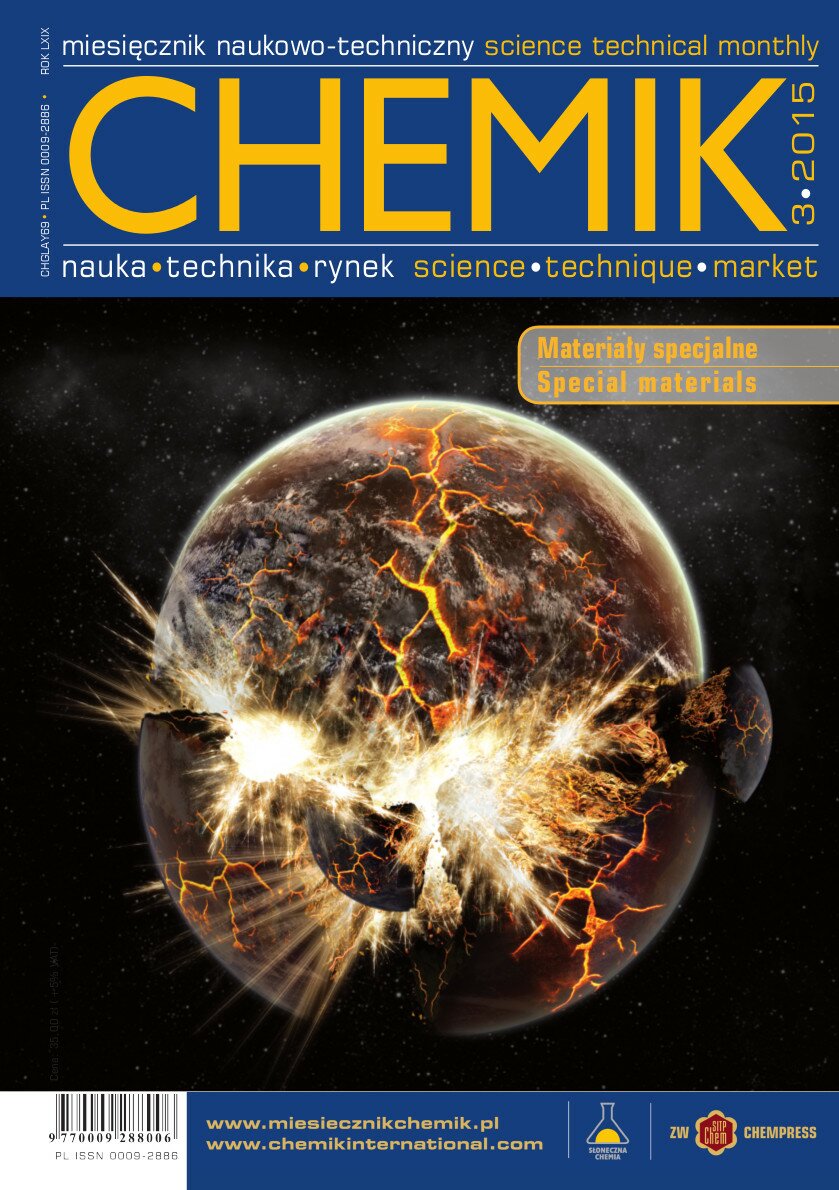Synthesis and properties of a new high energy complex compound [Cu(TNBI)(NH3)2(H2O)] LEWCZUK R., REĆKO J., SZALA M.
Please cite as: CHEMIK 2015, 69, 3, 123–128 The aim of this work was to synthesis a new complex compound which could be used in modern weapon systems as an energetic ingredient and modificator in composite rocket propellants. It should fulfill the following main characteristics: to catalyze reaction to get cooler products, to enhance burning rate and to reduce sensitivity to mechanical stimuli of propellants. We decided to combine energetic ligand 4,4’,5,5’-tetranitro-2,2’-biimidazole (TNBI), which is relatively insensitive in form of salt with copper as a coordination centre, because cupric oxide is known as catalyzing agent. New complex of TNBI, copper and ammonia was obtained in the reaction of copper chloride, ammonia and TNBI in water solution. Properties of the title complex were investigated with nuclear magnetic resonance methods, thermal analysis, elemental analysis and atomic absorption spectrometry. Sensitivity to impact and friction were determined also.
Keywords: TNBI; explosives; copper complex compounds Read more in pdf

...
Read more





